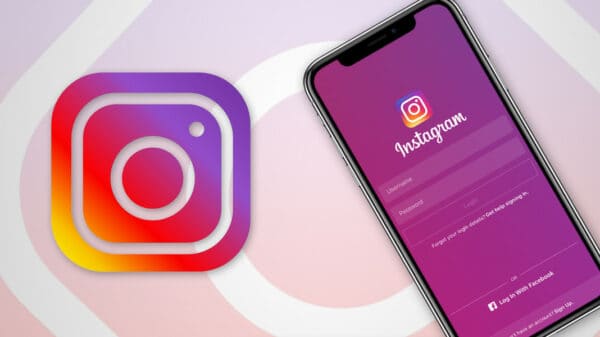Nowadays, smartphones are present everywhere. Whether it is about communicating with other people, shopping your favorite things, completing daily tasks, finding out a specific location, or more, a mobile is used for just about everything. However, what stays common among many apps, is lack of usefulness, or relevancy.
The common trend is if an app like Instagram becomes an instant hit with picture-savvy people, why shouldn’t you replicate the image sharing app, or make something similar to it. If Facebook or Twitter is at the pinnacle of social networking, why not create a social app close to them.
It is a universal human mental tendency, to copy what clicks well with users. In such a process, the usability factor takes a back-seat, with a hoard of apps looking all the same. You need to understand that when creativity combines with utility, your app will certainly defy limitations, and what you actually do is inspire people, as well as businesses.
We analyzed what it takes to build absolutely valuable apps, and we found out these five significant factors, not only let your app be useful, but also reserve a special place in user hearts by standing out from the crowd.
1. Deliver natural flavor by being productive
Developers always strive for creativity, in order to make their apps look jazzy, and uniquely different. Sometimes, in the race of making an app more innovative, the actual purpose is forgotten. Focus more on what your app will bring to the table for users, rather than simply creating something looking great, but has no substance. Take an image editing app, for example. Work upon the smallest possible elements such as brushes, colors, shapes, pencils, and more, to see whether they work smoothly or not. If users are able to edit pictures with ease using the image editing tools, they would be rather happier to use it again and again, in spite of a basic interface.
2. Stick to a freemium model
We have seen examples of some amazing apps that work like wonders. However, still people refrain from downloading those apps, just because they demand an upfront payment for using the functionalities. Spending hard earned money on apps, is something not popular with app users. Users will only like to spend on apps, only if they are getting something of a high value in return. Just eliminate this friction, by offering basic features in your app for free, and providing users with an option to pay, only if they want to use advanced features. Ensure that you provide all the standard features for free, so that your audience need not to install other apps, having an all round appeal.
3. Allow third parties to penetrate
I know. Most of you would not agree with this. You might argue, “If we allow third parties, then our apps run a risk of getting hacked, or be vulnerable to viruses, malware, bugs, errors.” However, you can surely authorize only reliable third parties, and even implement limitations on the app permissions, so that the third parties can use your app to a certain extent. Welcoming third parties to your app, will not only add another perspective of looking at your app, but also have maximum features and functionalities added to your app, which even you did not think of. Keeping your app isolated will not let it grow with the changing times. On top of that, you will have to constantly update your app all by yourself. Third parties make your work whole lot easier, by taking half of your responsibilities, and enhancing your app greatly.
4. New builds should not be depended on the past
It is wise to always start off fresh, rather than taking app creation ideas from the past. You might be inclined to learn from other app successes and failures, or even related with your own apps, and create apps having a successful history in the past, by avoiding ones having a bad history. However, there are many factors related to an app success, or failure, like absence of pre-release marketing, wrong app launch date/time, weak post-marketing campaigning, and lots more. It is highly advisable not to copy what has already been done in the past, because technologies, trends, user preferences, and behavior, change rapidly with time. Do not copy an app just because it has been successful in the past, or avoid the UI/UX of apps that have been a disaster. Think by placing yourself in the shoes of users, and analyze from a neutral mindset, what you would exact from the app.
5. Simplicity is all that you need among all ingredients
It is always one hell of a challenge, to pass across a message, or a story, to the users. You need to convey users the purpose behind your app. However, they will be only interested to read, if conveyed in the form of a book, wherein there is a systematic story to tell. Offer functionalities in an organized manner, appearing to users when needed. An ideal sequence is a sign-up/login/sign-in/create account form followed by home screen, payment screen, checkout, and others as applicable. Make these screens as simplistic as possible, with easy to understand text, images, videos, content, elements, components, and most importantly a smooth transition between screens.
Some final words to conclude
We have just discussed 5 important points to keep in mind while designing as well as developing user focused apps. However, when you actually sit down to create, there will tons other points popping up. In the era of competition, designers tend to haphazardly create UI/UX designs that might look appealing but lose marks on the usability factors. This can only be realized either by the developers, during the coding phase, or by end users post-release.
In the former case, the mistake could be rectified by making a great deal of effective changes. But it gets too late, if the app reaches the end users, delivering just quantity rather than quality. You can implement the above points in the designing phase itself, to avoid development efforts going wasted. At the most, implement them without thinking twice in the development phase, not letting it reach the deployment phase.
Kathy Kim is working with Fusion Informatics- a web, software and mobile application development company. She is exploring their experience through informative article with others.
























































































































































































